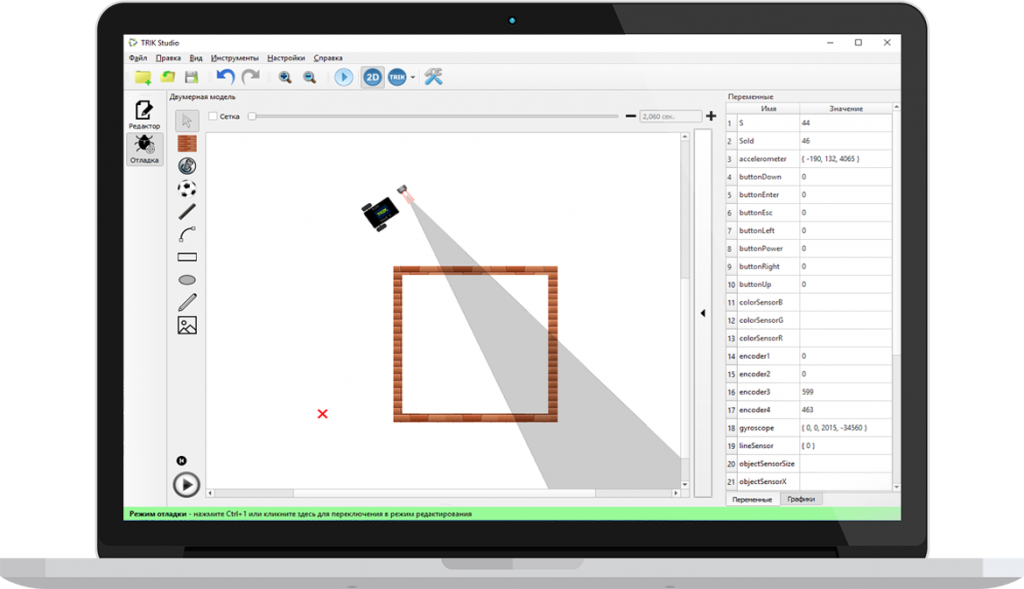Educational Robotics for every student!
Robotics is a powerful educational tool for introducing students to STEM methodology (Science, Technology, Engineering, Mathematics). Today, the number of robotics kits developed by companies and educational organizations for the construction and programming of robotic machines that move and interact with the natural environment is very large.
Along with robotics kits, a significant number of virtual simulation environments have been developed. The advantages of using simulation software in educational robotics are many. We note below the most important:
- Significant reduction in equipment costs, as the student needs to work only on their computer by using the simulation software, which in many cases is provided free of charge.
- The great progress in the construction of software from the field of gaming, has created tools with high photorealistic display and representation of the physical properties of the real world. These tools are also used by robotics simulation software.
- Easier debugging procedures.
- Easy import of virtual elements and scenarios, without the additional cost of their construction.
One such virtual robotics simulation environment is the TRIK Studio software. It is distributed free of charge and has been used successfully to conduct a virtual student robotics competition throughout Russia.

TRIK Studio is a complete educational robotics platform. Its main features are described below:
- The basic version is available for FREE.
- Supports the popular LEGO EV3 Mindstorms kit
- For programming, the robot has a user friendly visual programming language.
- Virtual navigation environment in two dimensions (2D).
- Easy creation of original scenarios, as it allows the introduction of any image as a virtual movement environment of the robot.
- Simulates the operation of the following sensors: color, light, contact, ultrasound and gyroscope.
- Simulates errors in sensors and motors so that their behavior resembles the real one.
- Instant display of the robot’s movements in real time.
- Built-in timer for accurate measurement in competitions
Description
At a glance:
The children will be divided into two groups, according to their age, with different topics each.
- The 1st group will include the children aged 10 to 13 years
- The 2nd group will include the children aged 14 to 16 years
The Marathon for both groups will be held in two phases, the qualifying and the final.
Qualifying phase:
Students participate in 6 fortnightly online competitions / trainings that aim to gradually improve their programming skills. In these 6 rounds, students will become familiar with the sensors: light, color, touch, ultrasound and gyroscope. The qualifying phase is not competitive. Students by participating only, every 2 weeks accumulate 2 points. At the end of the 6 fortnightly activities, those students who accumulate more than 8 points, advance to the final phase of the online competition.
Final Phase – Theme for 1st group: “The Yoda Game”
Star Wars is coming to an end. The Galactic Republic has returned to power. Yoda’s last mission is to destroy the explosive devices that are forgotten inside balls, in the 4 space stations. Can you help the wise Jedi teacher decode the leaked information and quickly and correctly identify the explosive devices?

Final Phase – Theme for 2nd group: “Rivers unite Europe”
Through this competition, participants will program robots to cross Europe’s waterways at high speed. The journey starts from Thessaloniki, where in the future will be the gateway to the European river route to and from the Mediterranean countries. Starting from Axios and through the Danube and the other interconnected rivers, it will be possible to communicate and transport goods, people and cultures, in almost every corner of Europe.

Competition procedure of the Final phase
- The detailed description of the topic of the final phase will be announced in January.
- Students work on the topic (for 1-2 months) trying to program their robot to successfully complete the mission.
- On the day of the online competition, an extra rule is announced to the groups, which aims to force students to make changes to the existing solution they have planned.
- The teams that day are given 3-4 hours to “solve” the new test and to email the code with their own solution.
- The judges of the competition “run” the students’ programs in the simulation environment and record the performance.
- If there are many teams, an additional qualifying phases will be held per region.
Participants
Age: 10 to 16 years old
Team: One or two students per team
Each team must be represented by an adult as a contact point
